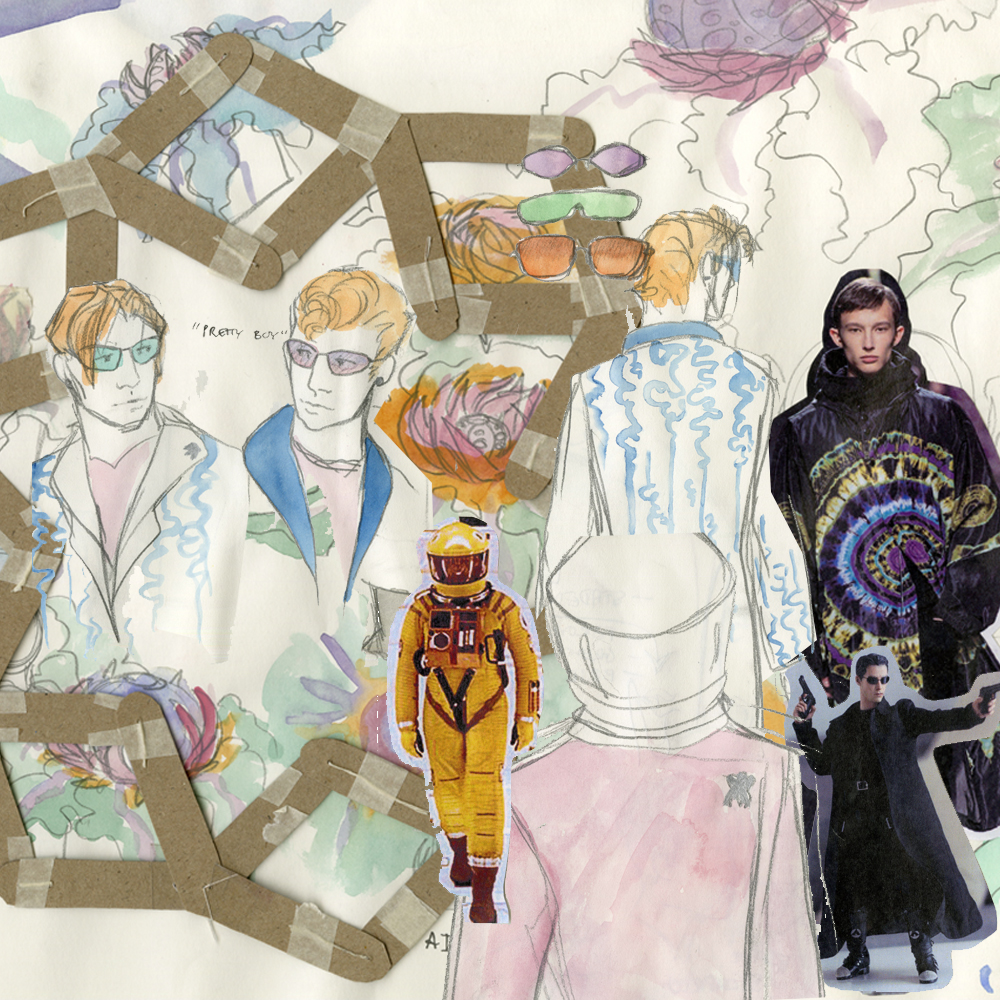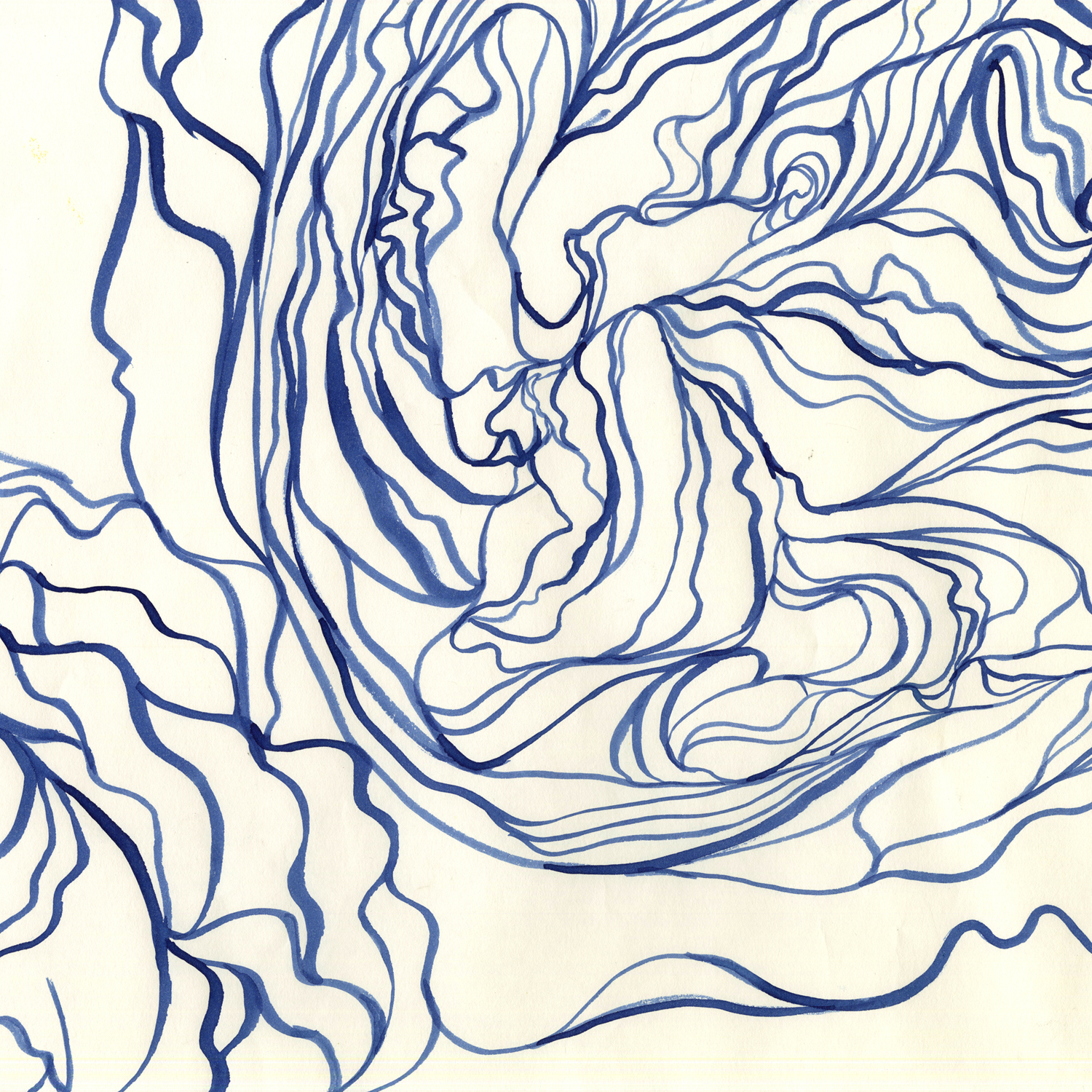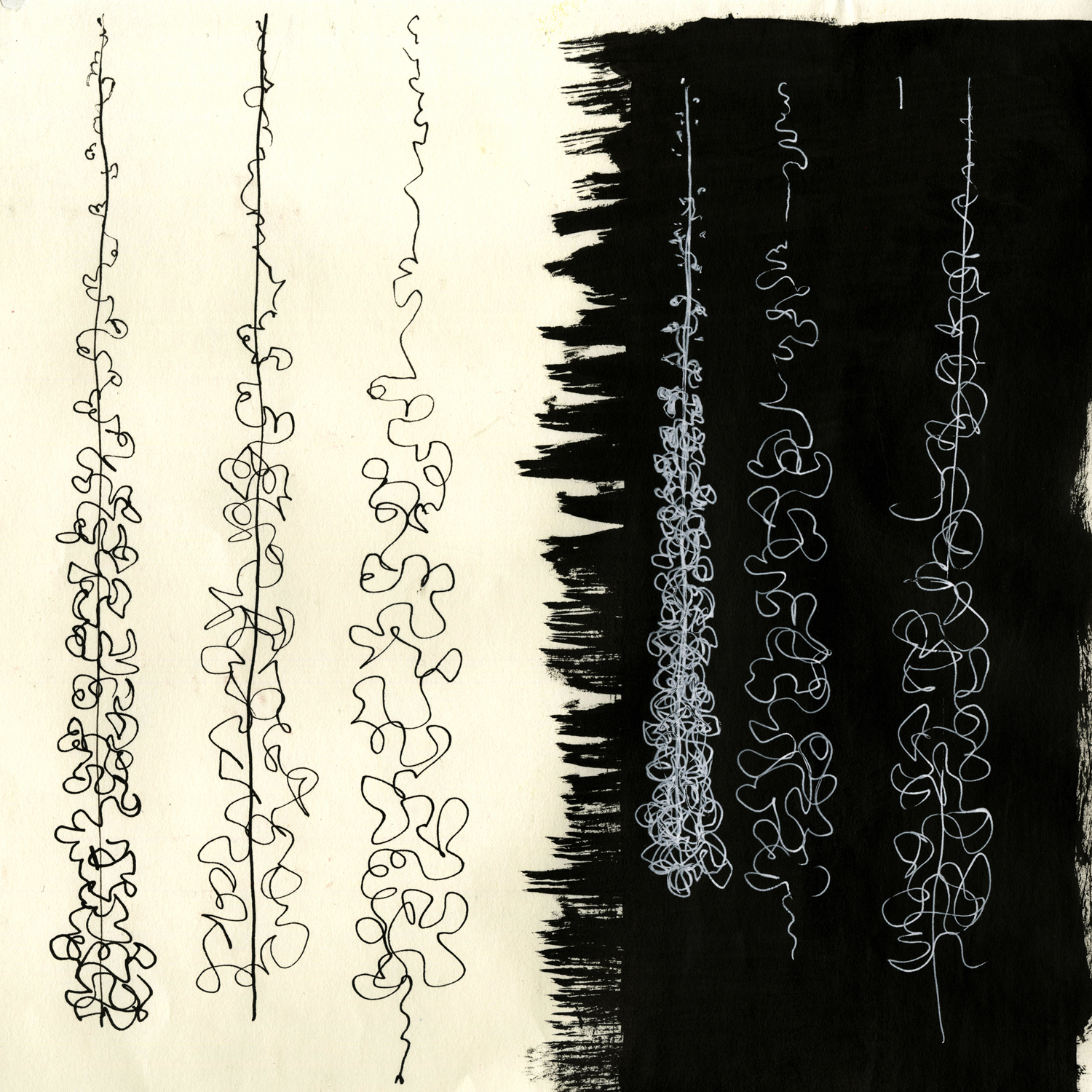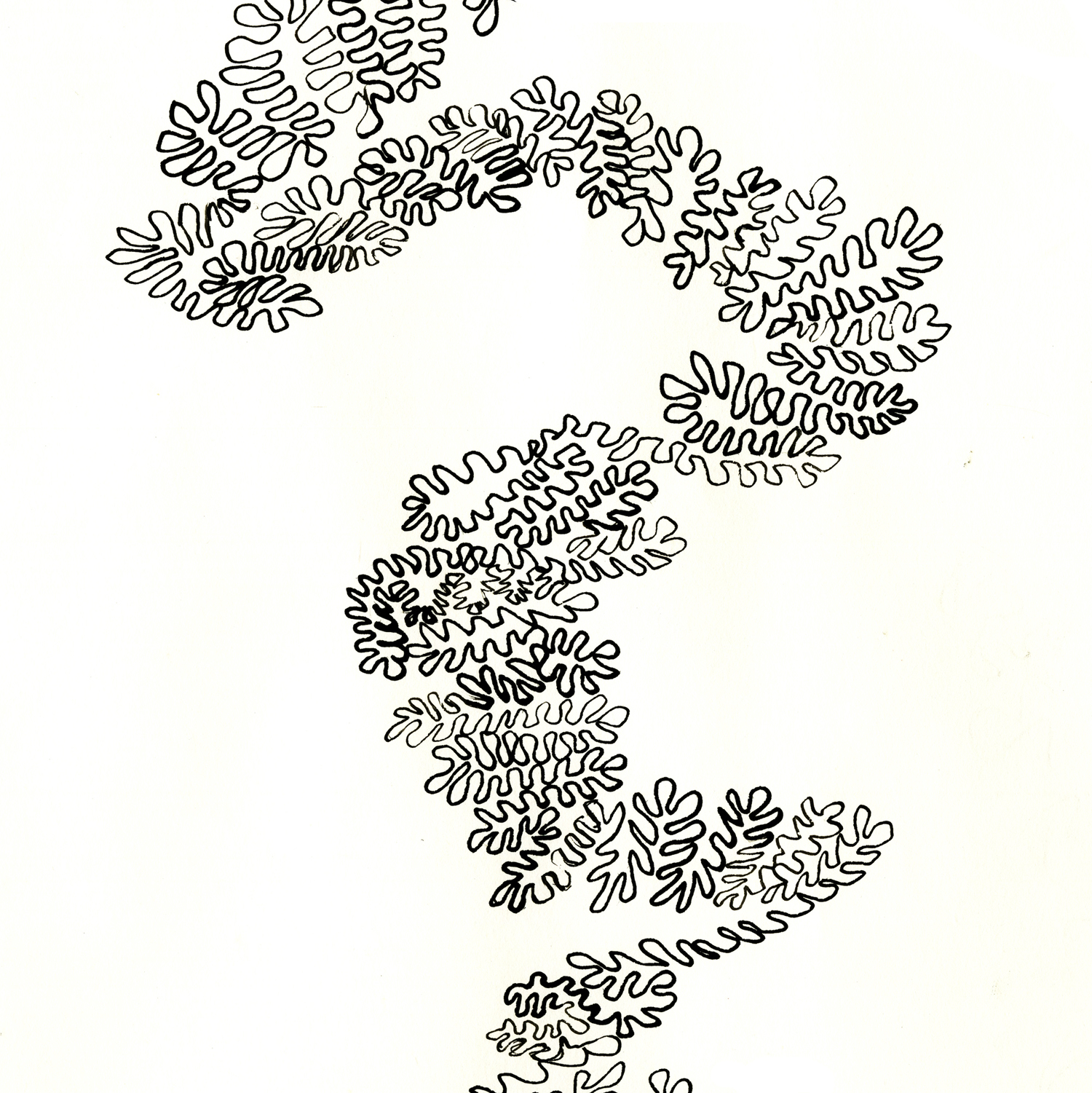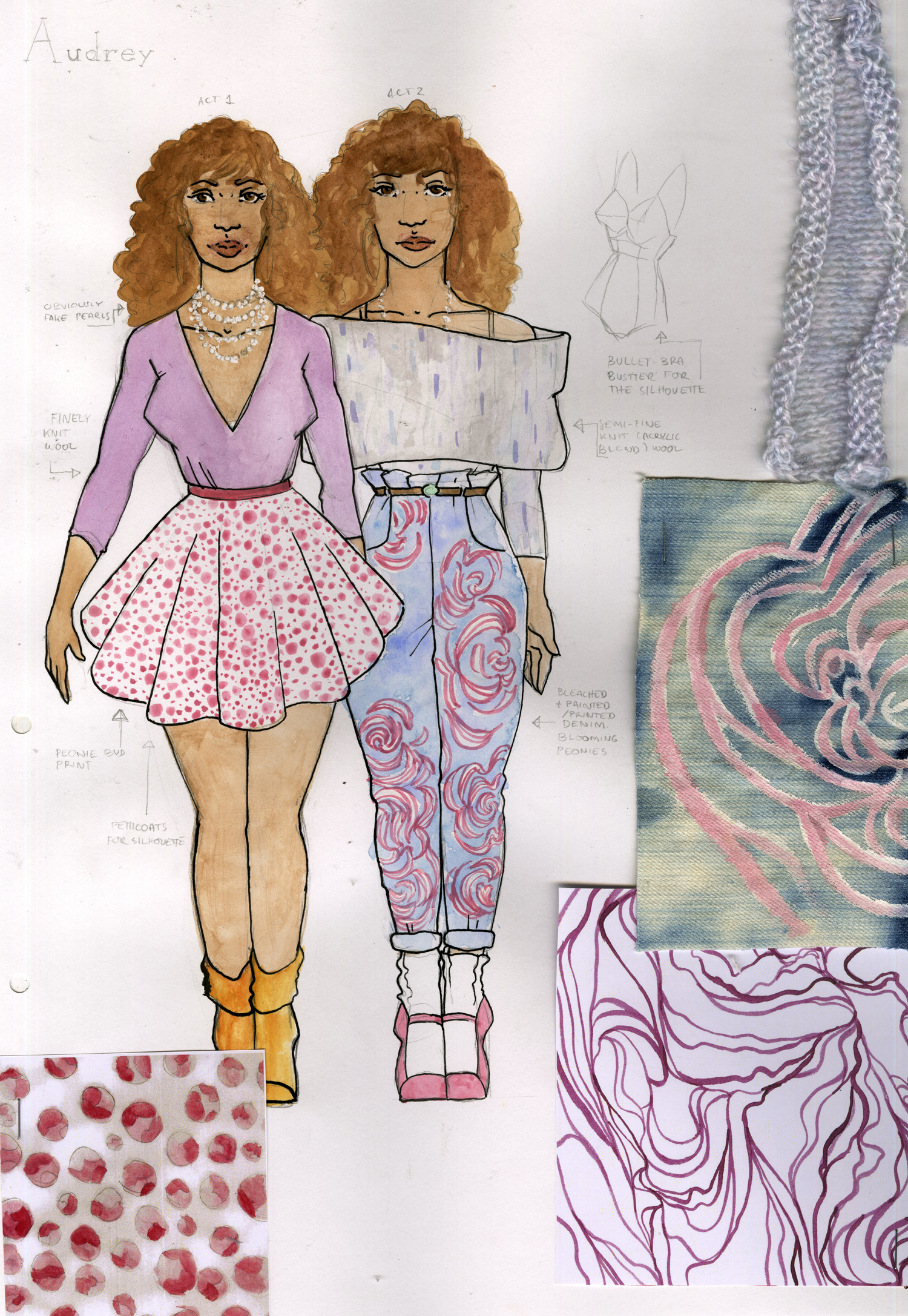December 2019: Little Shop of Horrors
Costume designs for Little Shop of Horrors (1982) by Alan Menken and Howard Ashman.
This project was part of my studies at Edinburgh College of Art. The assignment was to create a concept with costume designs and scenography for the musical Little Shop of Horrors working from botanical motifs, including technical drawings and material samples.
Little Shop of Horrors works in the grand tradition of pulp and dark humor. Audrey II is monstrous and horrifyingly scheming, just as she is hilarious and magnificent, a key attraction of the show. The book as well as the music is over the top, darkly witty, simple with a sincerity and depth for anyone who cares to look. As stated in the authors note to the book: "the script keeps its tongue firmly in its cheek, so the actors should not."
This adaptation sets the show in the 1990's, drawing from cultural and aesthetical similarities between the era and the original 1960's setting: both of them defined by futurism, hope, playfulness and liberation. My inspirations include Bridget Rileys Blaze 1 (1963), 1990's girl groups such as TLC, the retrofuturism of both eras, Julia Roberts and mechanical toy the Hoberman sphere. The aim here was to keep the show from becoming a time capsule; making a work a period piece can be a powerful tool to show the audience truths that might be too close for comfort in a contemporary story, but Little Shop of Horrors is also an established show and as such, moving away from the original setting is a way to let audiences find new perspectives on the story.
Below: development sketches for pattern print designs.
In the great tradition of pulp monsters, Audrey II can easily be read symbolically as the physical manifestation of the structures that trap the characters in Skid Row, all of them too caught up with using her to leverage themselves out of their situation to pay much mind to the threat she poses. As such, elements of Audrey appear all throughout the designs, the botanical motifs expanding and creating new connections as her influence over the characters grow.
The set reaches out beyond the fourth wall and uses a trompe l'oeil effect. Just as with the costumes there is a playfulness and attention to detail. As act two begins, Audrey II has spread, botanical elements hanging from the rafters and over the balconies of the stage.
Below: sketch and calculations for scenography model, costume plates with samples for Audrey (act I and II) and Orin Scrivello.



